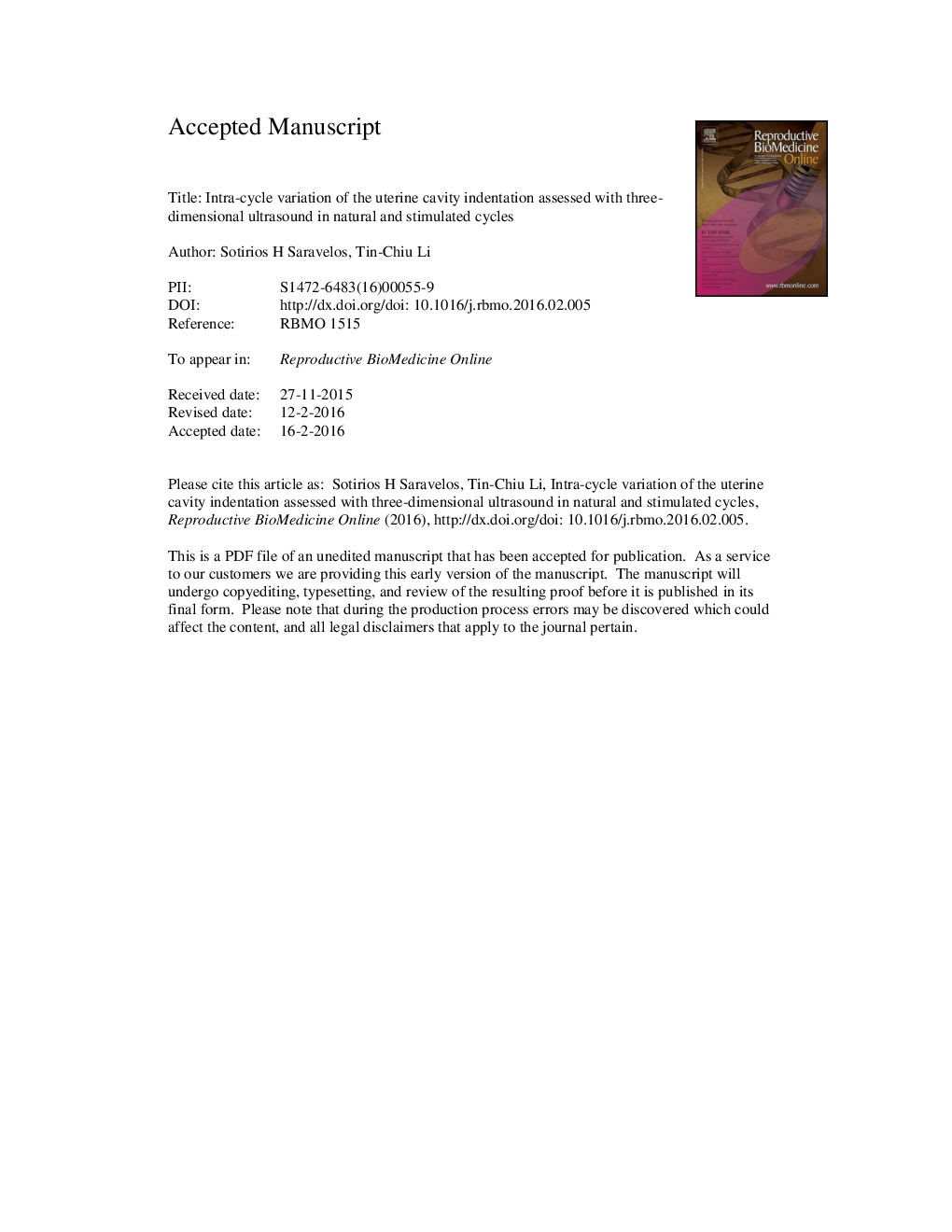| Article ID | Journal | Published Year | Pages | File Type |
|---|---|---|---|---|
| 6188667 | Reproductive BioMedicine Online | 2016 | 11 Pages |
Abstract
The recent ESHRE-ESGE classification for female genital anomalies attempts to promote objectivity in diagnosis of normal and septate uteri. The aim of this study was to ascertain whether the uterine cavity indentation - the characteristic feature of septate uteri - varies significantly throughout the cycle. Seventy consecutive women underwent three-dimensional ultrasound twice: 35 during the proliferative and luteal phase of a natural cycle, and 35 during the first and final day of a stimulated cycle. Endometrial thickness, interostial distance, cavity indentation and percentage of cavity indentation were all assessed in accordance with the ESHRE-ESGE consensus on diagnosis of female genital anomalies. Overall, throughout both cycles, there was a significant increase in endometrial thickness (from 4.6âmm to 10.2âmm; P < 0.001) and interostial distance (from 30.1âmm to 35.1âmm; P < 0.001), which was associated with a significant reduction in the percentage of cavity indentation (from 30.3% to 15.0%; P < 0.001). Between the first and second assessment, 3/70 (4.3%) patients had a change in diagnosis from septate to normal uterus, although this did not reach statistical significance. This observation of a significant intra-cycle variation of the uterine cavity indentation has important implications for both clinical practice and research.
Related Topics
Health Sciences
Medicine and Dentistry
Obstetrics, Gynecology and Women's Health
Authors
Sotirios H. Saravelos, Tin-Chiu Li,
